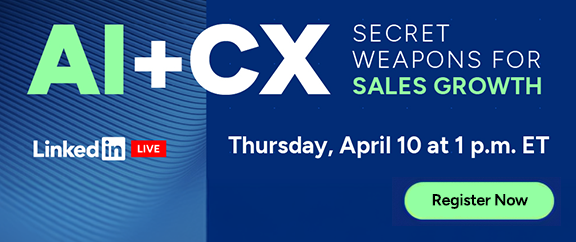Over the past 10 years we've seen this buzzword called “omnichannel” come into play. This has left organizations with a channel-first strategy that ironically led to less access and fragmented conversations due to poor hand-offs, technology introduced for technology’s sake, and misuse of data.
What’s missing is human authenticity powered by intelligent automation. That means putting less thought into the channel and more thought into the actual customer journey. This begins by creating a one-to-one relationship with your customer. Here’s how:
Stop starting from zero
COVID-19 has put has digitalization into hyperdrive. Channels that organizations had on the backburner became an essential form of communication, comfort, and survival. But this also means that customer expectations are higher than ever. They demand effortless, seamless experiences.
Customers interacting with brands online want to be able to find answers that are tailored to them based on their interactions and habits. Factors like self-service must come forward for customers to be able to access a site whenever they want, on the channel of their choice, without having to reidentify themselves when they switch from messaging to voice or vice versa.
This means stop making consumers start from zero every time they change channels. Ongoing, continuous conversation is the key to maintaining a good relationship with customers. Effortless experiences need to be translated across every channel.
Show me that you know me
Everyone good relationship is founded on understanding. Personalization is that critical factor for businesses to articulate that they understand their customers taste and priorities. But it needs to be done gracefully.
Personalization doesn’t mean defining customers strictly as a cohort or a general group. Nobody wants to be defined as a cohort and have data delivered to them as the same way that it would be delivered to everyone in that cohort. It’s not for them, It's for that cohort. And that’s when people get turned away.
CX leaders need to understand the sentiment of what personalization means for a customer today: it's one to one, it’s who they are as an individual, not as a group. Use all the data that you know about someone to build an environment specifically tailored to them as a single person.
Cohorts are the easy way out, one can apply demographics and can make assumptions on the ways groups like to engage and act. And that data is useful, but it should be utilized to get narrower and narrower into that one-to-one conversation.
And so how can one deliver it without compromising efficiency? Efficiency should be a consideration but measured differently. Organizations need to shift the focus from traditional metrics like reducing the time an agent spends with the customer to designing around what the customer actually needs.
Efficiency metrics need to be challenged. Conversations need to deliver on personalization and quality by leveraging the customer journey first with an intelligent automation as an assistant to drive a better-quality relationship. Find where automation can step in to help supply relevant suggestions and talking points. Create a digital shoulder to lean on.
Consumers today want to be treated as individuals. That is the hyper-personalization—leveraging automation to deliver efficiency so when we do have human interactions they deliver quality over quantity.
Leverage your data
At the end of the day, leaders need to make sure that they have strong data governance models and ensure that they are deploying it ethically and intelligently around the customer journey. It's not data for data’s sake. It's data that is correlated and orchestrated around every touch point customers go through—from the website to the brick-and-mortar and back.
Getting comfortable with intelligent automation and intelligent customer behavior analytics is essential. It all starts and ends with the level of maturity that databases inform a customer journey strategy and how that data is continuously used to improve the personalization and efficiency leveraged by intelligent automation. It's all about that middle layer of the data that’s being collected, understanding the purpose of that data, and how that is being leveraged across the customer journey.
Strategize the proactive engagement marathon
A one-to-one relationship means being proactive. Like personalization, proactive engagement is a balancing act. It’s an incredible chance to provide tailored service, but if a customer deems it annoying or is too general it can be detrimental.
For example, a running store knows through their CRM data that a one marathoner comes in every four months to buy new running shoes. While the runner has a consistent need for equipment, she doesn’t want to see every single sale or discount that the store has going on in her emails. She wants her behavior and needs targeted.
Sales pitches and offers are becoming less effective because people are tuning out the constant barrage of discounts and deals without context or personalization.
Imagine instead that the store uses data to make the most out of proactive engagement. They understand that every few months the runner buys new shoes so when it gets closer to that period they send personal messages that cater to her needs: “Looks like the next marathon is around the corner, how have your runs been? How has your training been?” It’s a hyper-personalized conversation that focuses on the person, not the sale.
That's proactive engagement. That's anticipating the needs. It comes all from understanding the customer journey how we are going to deliver proactive or predictive engagement by understanding the touch points first and then under getting the right data about me as a consumer.
Forge an effortless future
Today’s environment has proved to be a testing ground for innovation and resilience for technology, but above all its allowed human authenticity to shine. Digital for digital’s sake won’t cut it in this age, it needs to be used intelligently and personality to unlock amazing customer experiences.


















